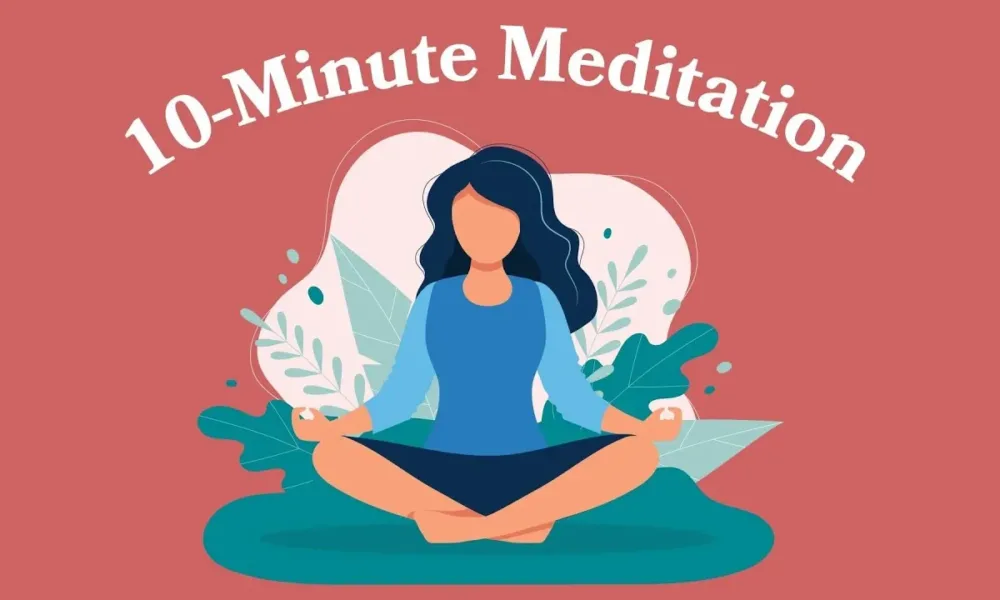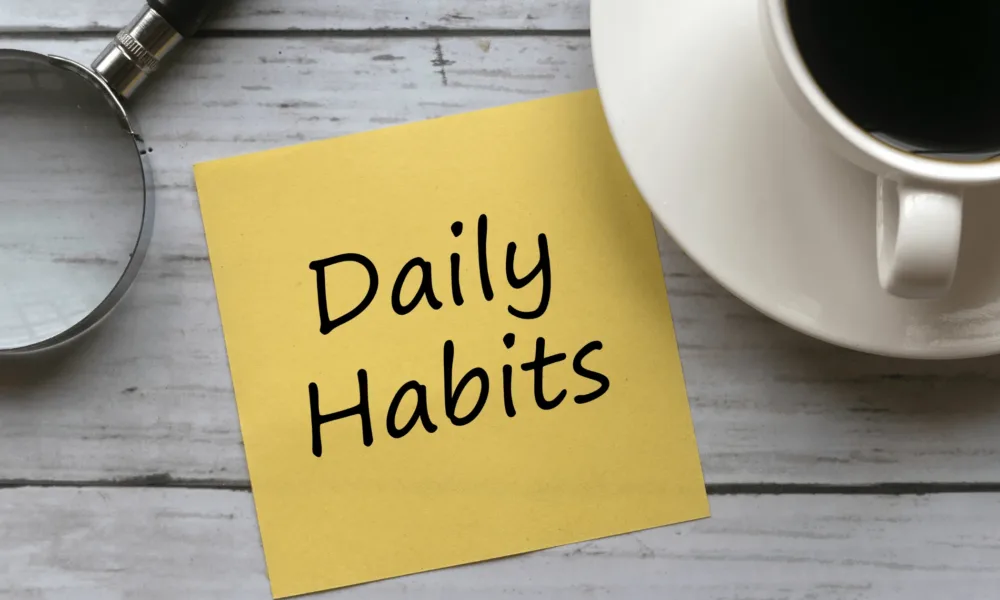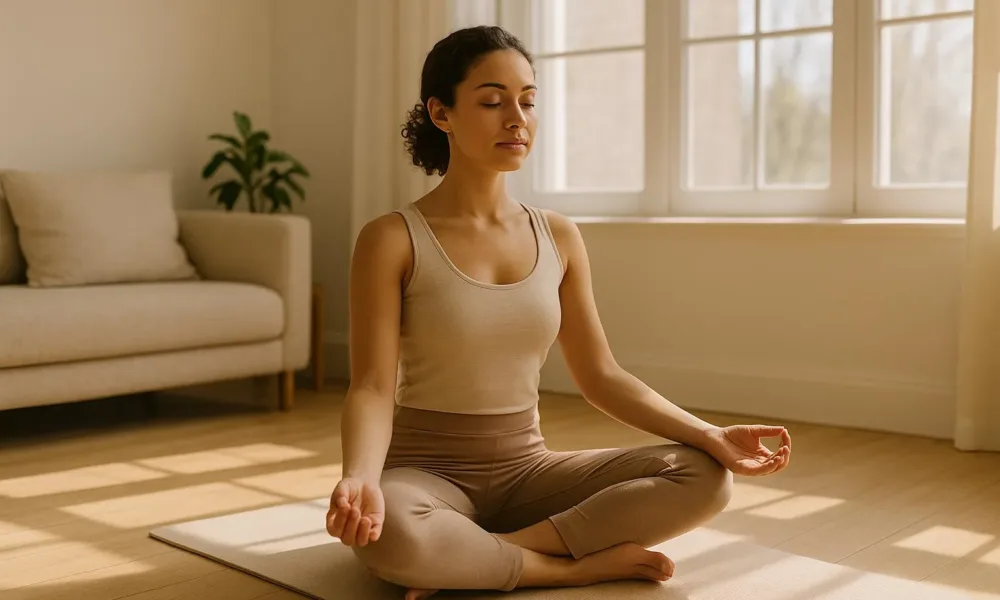Most people think mindfulness requires long meditation sessions, a quiet mountaintop, or hours of undisturbed silence. But the truth is far kinder: your mind begins to shift the moment you give it even a few minutes of intentional presence. A small daily practice can soften your anxiety, sharpen your focus, and reconnect you to yourself in a way that feels surprisingly nourishing.
You don’t need to sit cross-legged. You don’t need special tools. You don’t need to “empty your mind” like a monk.
You just need 10 minutes.
In a world that constantly demands your attention, a short mindfulness routine becomes your quiet rebellion — a decision to slow down, breathe, and remember you’re a human being, not a machine.
This article serves as a practical, gentle guide to building a 10-minute daily mindfulness routine that fits your life, your personality, and your real schedule. It’s not about perfection. It’s about creating small pockets of peace that add up.
Table of contents
- Why a 10-Minute Routine Works
- Before You Start: Remove the Pressure
- The 10-Minute Daily Mindfulness Routine
- Minute 1: Arrive in the Moment
- Minutes 2–3: Anchor Your Breath
- Minutes 4–5: Body Awareness Scan
- Minutes 6–7: Emotional Check-In
- Minutes 8–9: Intention Setting
- Minute 10: Gratitude Pause
- How to Make It a Daily Habit
- What to Do When You Don’t Have 10 Minutes
- Mindfulness Doesn’t Have to Be Quiet or Still
- Troubleshooting Common Challenges
- How Mindfulness Gently Transforms Your Life
- A Mindfulness Routine You Can Personalize
- Sample Weekly Structure (to keep things fresh)
- The Beauty of a Routine This Small
- Closing Thoughts: Your Mind Deserves Attention Too
Why a 10-Minute Routine Works
You may wonder: Is 10 minutes enough?
Research says yes — and your nervous system agrees.
Even brief mindfulness sessions:
- Lower cortisol levels
- Reduce stress and emotional reactivity
- Improve focus and working memory
- Strengthen your ability to regulate emotions
- Increase feelings of calm and well-being
And perhaps most importantly: 10 minutes is doable.
It’s short enough that you won’t talk yourself out of it, and long enough to make a meaningful shift in your mental state.
Consistency beats duration every time.
Before You Start: Remove the Pressure
A successful routine doesn’t come from forcing yourself to meditate perfectly — it comes from giving yourself permission to simply be present.
Here are a few mindset reminders:
1. There is no “right way.”
Mindfulness isn’t about controlling your thoughts. It’s about noticing them without judgment.
2. Forget the image of perfect stillness.
Mindfulness can be done sitting, standing, walking, lying down — whatever feels comfortable.
3. Small is powerful.
You don’t need 30 minutes. You need 10 minutes of intentional awareness.
4. Your mind will wander.
This isn’t failure — this is the practice. Every time your mind drifts and you bring it back, you’re strengthening your mental muscles.
The 10-Minute Daily Mindfulness Routine
Below is a simple, beginner-friendly practice broken into phases. You can follow it as-is, repeat your favorite parts, or adjust it over time.

Minute 1: Arrive in the Moment
Start by simply arriving.
- Sit or stand comfortably.
- Close your eyes if you want.
- Take a slow breath in through the nose.
- Exhale gently through the mouth.
Tell yourself:
“I am here. I am safe. This moment belongs to me.”
This first minute is the mental doorway that separates the busyness outside from the quiet you’re creating inside.
Minutes 2–3: Anchor Your Breath
Breath is the simplest, most universal anchor for your attention.
- Inhale for a count of 4
- Hold for 1
- Exhale for a count of 5
Repeat gently.
The goal isn’t perfection — it’s awareness.
If your mind starts thinking about the day, dinner plans, or something someone said — that’s okay. Notice it, and return to the breath.
This teaches your mind: I can come back to center, no matter what.
Minutes 4–5: Body Awareness Scan
Bring your attention slowly downward through your body, like a warm light moving from your head to your toes.
Notice:
- Tightness
- Heat or coolness
- Pressure points
- Comfort
- Discomfort
You don’t need to change anything.
Just observe.
This is how you reconnect to your physical self — the part of you that quietly carries your stress long before your mind notices.
Minutes 6–7: Emotional Check-In
Ask yourself:
“What am I feeling right now?”
Not yesterday, not later — now.
You might notice:
- Anxiety
- Calm
- Excitement
- Tension
- Sadness
- Neutrality
Whatever comes up, greet it with kindness.
You can even whisper:
“It’s okay for me to feel this.”
This is emotional mindfulness — the practice of acknowledging your inner weather without trying to change the forecast.
Minutes 8–9: Intention Setting
Now that your mind is quieter and your emotions are acknowledged, set a gentle intention for the next part of your day.
Examples:
- “I will move through today with patience.”
- “I choose clarity over autopilot.”
- “I will treat myself with kindness.”
- “One moment at a time.”
- “I am here, and that is enough.”
Intentions act like internal guideposts, softly shifting how you respond to the world.
Minute 10: Gratitude Pause
Finish your practice by naming one thing you’re grateful for.
It can be small:
- The warmth of your coffee
- A quiet room
- Your breath
- A friend
- The chance to begin again
Gratitude gently rewires your brain to notice the things that are going right in your life — a powerful habit for emotional resilience.
Take one last deep breath and open your eyes (or lift your gaze). Feel the subtle shift inside you.
You’ve completed your 10-minute mindfulness routine.
How to Make It a Daily Habit
A routine only works when it feels doable. Here are simple ways to make mindfulness part of your everyday life without struggle.

1. Pair It With an Existing Habit
Link it to something you already do:
- Right after waking up
- Before starting work
- After lunch
- Before bed
Habit pairing makes the routine automatic.
2. Keep Everything Simple
Sit however you want.
Use whatever time you have.
Avoid apps and tools at first if they overwhelm you.
Let the practice be effortless.
3. Don’t Wait for the Perfect Setting
Mindfulness can happen:
- In your car before starting the engine
- On the edge of your bed
- At your desk
- In the shower
- During a walk
The real goal is presence, not aesthetics.
4. Be Flexible, Not Rigid
If you miss a day, you didn’t fail — you’re human.
Resume the next day with compassion.
Consistency grows through kindness, not pressure.
5. Notice the Small Wins
You’ll start to see shifts:
- You react less sharply
- You breathe more deeply
- You focus more easily
- You return to calm faster
- You feel more anchored
These changes motivate you to continue.
What to Do When You Don’t Have 10 Minutes
Some days truly feel impossible. When that happens, try a 1-minute micro-practice:
One-Minute Reset
- Inhale for 4
- Hold for 2
- Exhale for 6
- Notice one thing you can see, hear, and feel
That’s it.
Even this tiny reset can interrupt stress spirals and bring you back to yourself.
Mindfulness Doesn’t Have to Be Quiet or Still
People often think mindfulness requires sitting motionless. Not true.

Here are movement-based or active forms of mindfulness you can try when sitting still feels uncomfortable:
1. Walking Mindfulness
Pay attention to the movement of your feet and the rhythm of steps.
2. Mindful Eating
Choose one snack or meal to savor slowly.
3. Mindful Showering
Feel the warmth, smell the soap, listen to the water.
4. Mindful Listening
Notice the layers of sound around you — not interpreting them, just hearing.
5. Mindful Journaling
Write down what you’re feeling with curiosity, not criticism.
Mindfulness is simply focused awareness — it’s not the posture that matters, but the presence.
Troubleshooting Common Challenges
“My mind won’t stop racing.”
It’s not supposed to.
Your job is not to eliminate thoughts — it’s to observe and return.
“I get bored.”
Boredom is a sign that your mind is detoxing from overstimulation.
Stay with it — the calm is right behind the boredom.
“I keep forgetting to practice.”
Set a gentle reminder. Keep it low-pressure.
“I don’t feel calmer.”
Think of mindfulness like watering a plant.
Some days the growth is invisible, but it’s happening.
“I fall asleep.”
Try sitting up instead of lying down, or practice earlier in the day.
How Mindfulness Gently Transforms Your Life
Practicing 10 minutes a day won’t suddenly erase your stress — but it will slowly transform how you respond to it.
Here’s what people commonly begin to notice after a few weeks:
- You stop reacting impulsively.
- Your emotions feel less overwhelming.
- You think more clearly under pressure.
- You catch yourself before spiraling.
- You enjoy small moments more deeply.
- You feel kinder toward yourself and others.
- You create mental “breathing room” in your day.
Mindfulness doesn’t change your life by force — it shifts your inner landscape so life feels more manageable, meaningful, and gentle.
A Mindfulness Routine You Can Personalize
Here are additional elements you can mix and match in your 10 minutes depending on your mood or need.

Add-On Options:
- A minute of stretching
- Positive affirmations
- Visualizing a calm place
- Journaling thoughts
- Listening to soft music
- Gentle neck or shoulder release
Think of your routine as a toolkit, not a rulebook.
Sample Weekly Structure (to keep things fresh)
Instead of repeating the exact routine daily, you can vary it:
Monday: Breathwork + Gratitude
Tuesday: Body scan + Intention setting
Wednesday: Emotional check-in
Thursday: Visualization
Friday: Compassion meditation
Saturday: Mindful movement
Sunday: Slow, grounding breath + Journaling
Routine thrives when it feels engaging, not repetitive.
The Beauty of a Routine This Small
What makes a 10-minute routine extraordinary is not the duration — it’s the accumulated impact.
Ten minutes a day is:
- 70 minutes a week
- 300 minutes a month
- 3,650 minutes a year
- Over 60 hours of mindfulness
Imagine what 60 hours of presence can do for your emotional balance, relationships, work, resilience, and self-understanding.
One small daily act becomes a profound long-term shift.
Closing Thoughts: Your Mind Deserves Attention Too
Mindfulness is not about becoming a perfect, calm, eternally serene person. It’s about coming home to yourself, a few minutes at a time.
You deserve a life where your mind isn’t pulling you in a hundred directions, where you’re not always overwhelmed, and where you can find moments of clarity even in chaos.
A 10-minute daily mindfulness routine is a gift — a gentle one — that says:
“I matter enough to pause.”
“I deserve my own presence.”
“My inner world is worth tending to.”
Start today.
Ten minutes is all you need.
Let it be simple.
Let it be imperfect.
Let it be yours.
